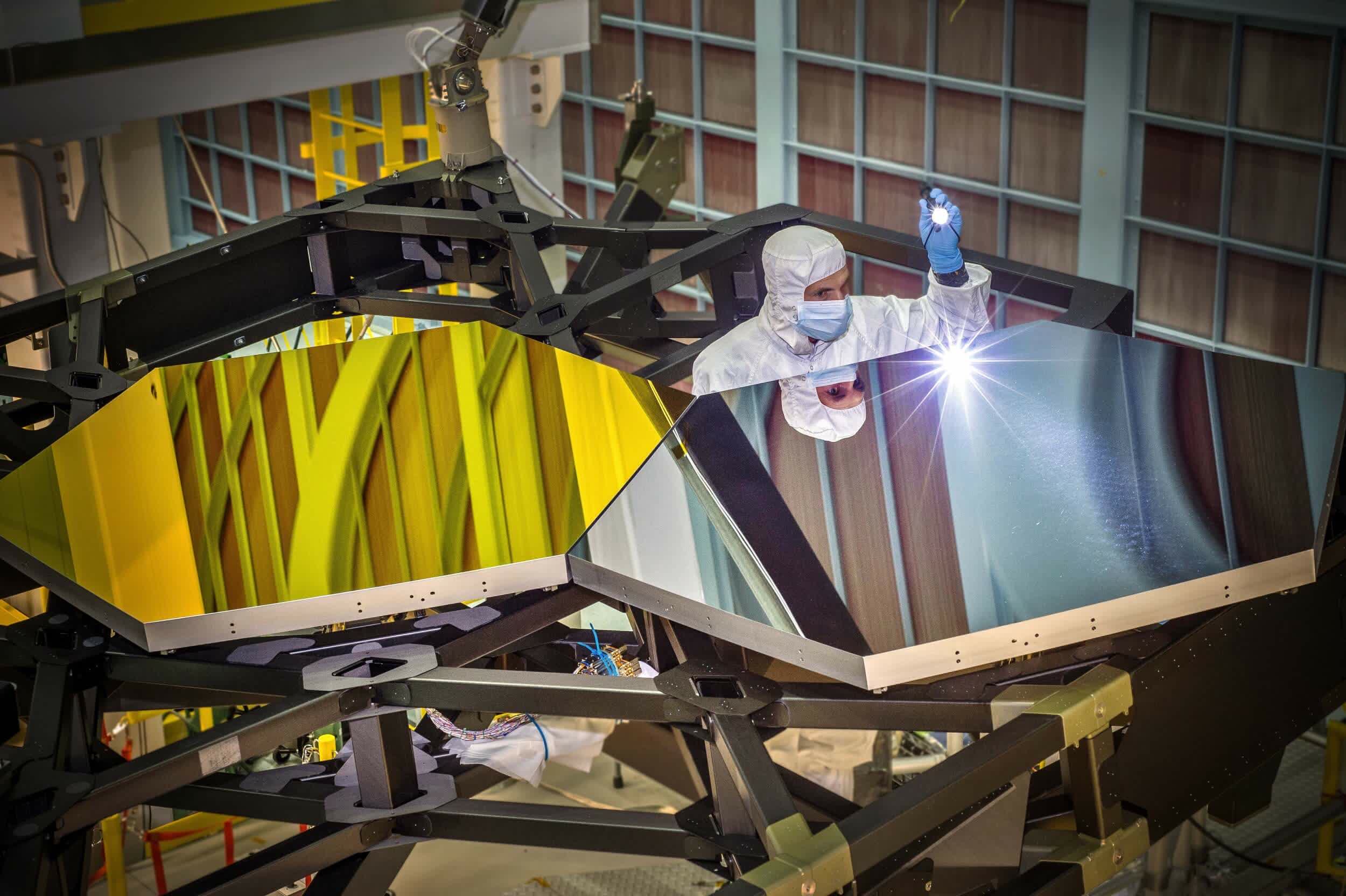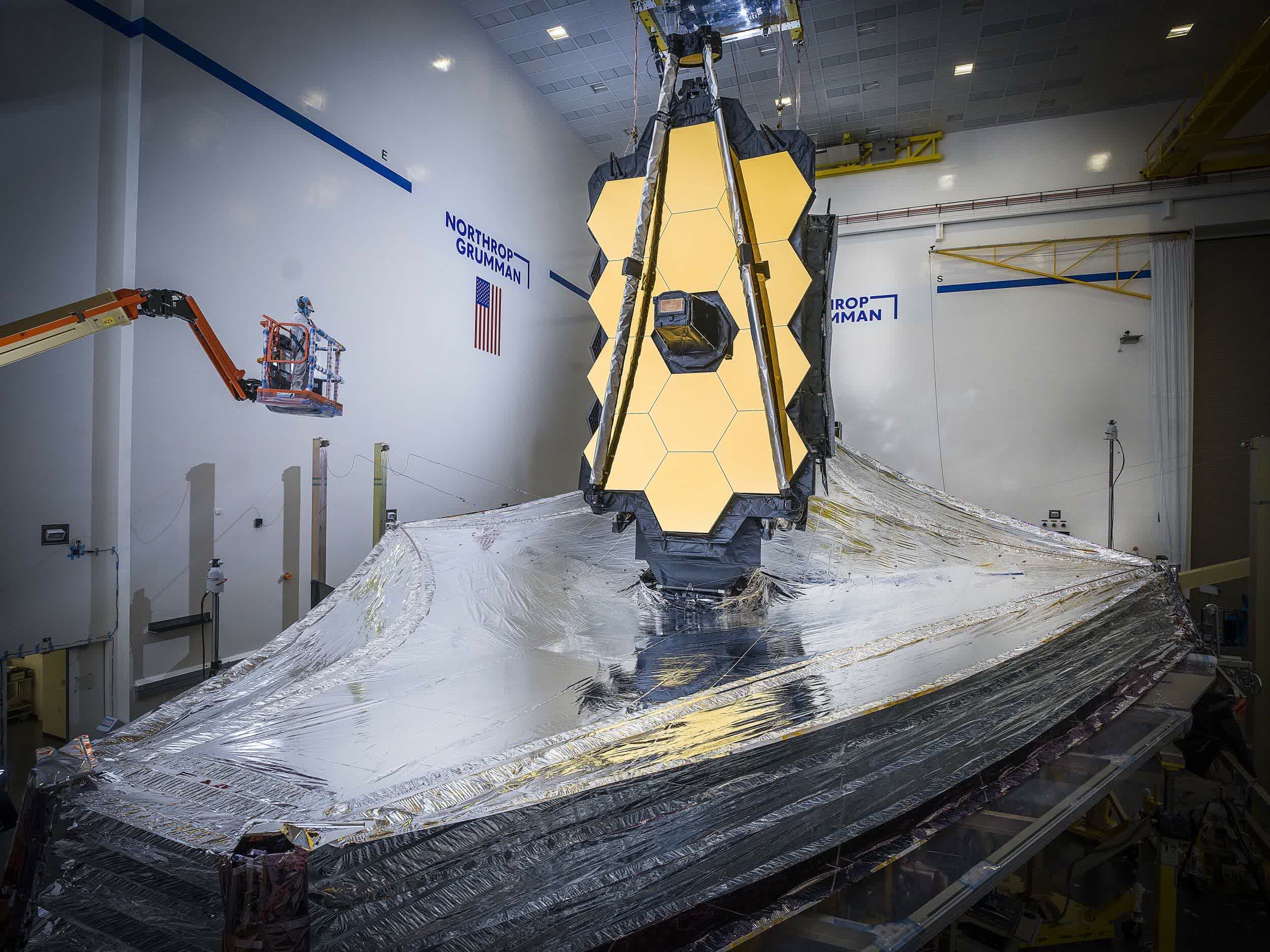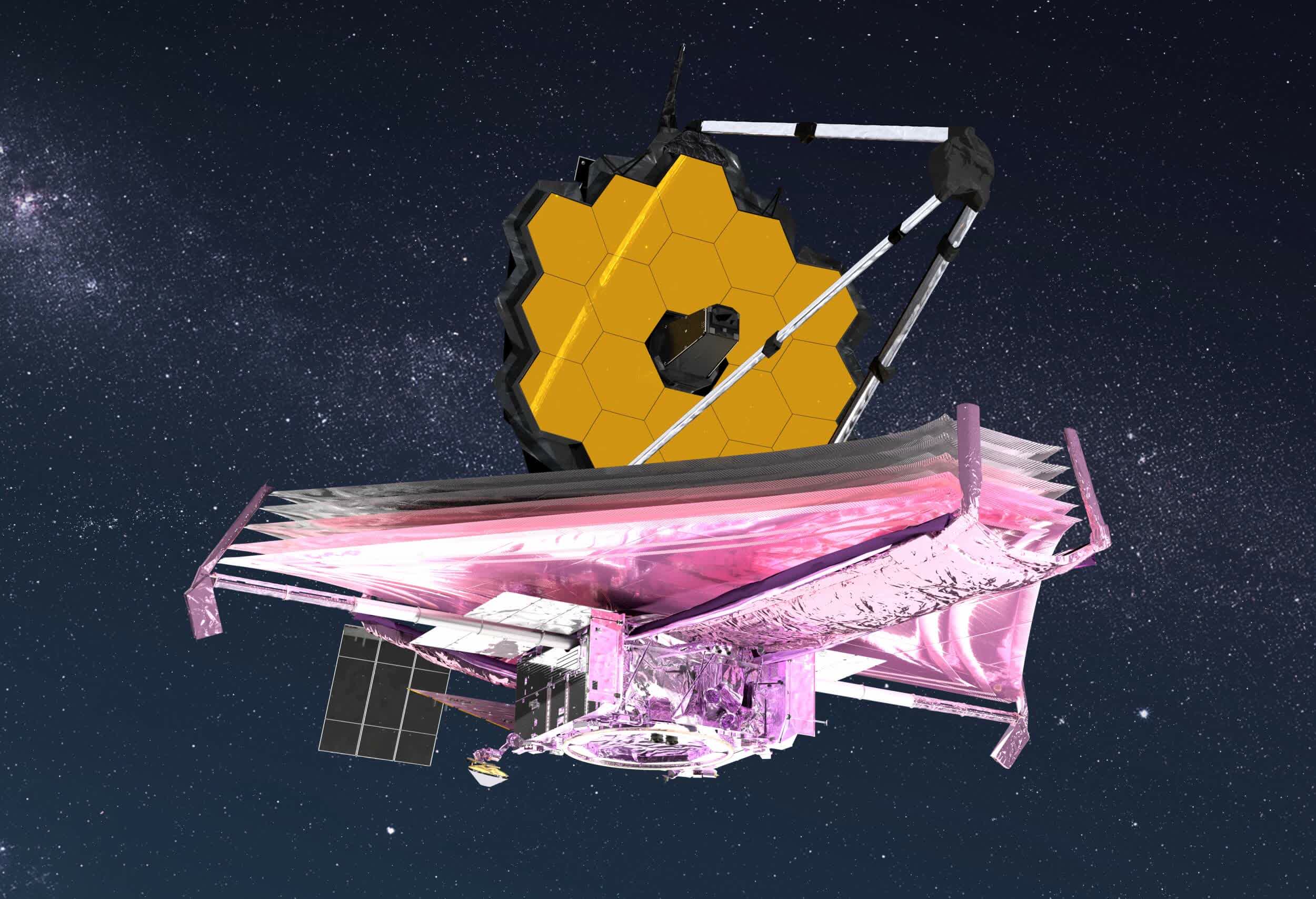The big picture: When the James Webb Space Telescope launched into space on Christmas Day, some were surprised to learn the observatory wasn't equipped with cameras that would allow us to follow its journey from Earth to its destination at the second Lagrange Point roughly a month later. As it turns out, there are plenty of good reasons why NASA left them off.
The space agency in a recent thread on Twitter said that for starters, the gold-coated mirrors on Webb were very photogenic here on Earth but the mirror side of Webb is pitch dark in space. The Sun-facing side, meanwhile, is so shiny that cameras would struggle with glare and contrast issues.

Cameras would have required NASA to run more cables and allocate power for them. "More cables adds more of a threat of heat and vibration transfer through the wires, which could impact image quality," NASA said.
What's more, NASA would have had to design a special camera for the cold side of the sunshield as plastic shrinks, cracks and falls apart at very frigid temperatures, and glue doesn't hold together.
Furthermore, Webb is already big and very complex with multiple deployments that all have to be performed in space without a hitch. Adding additional hardware would only further complicate things and then, you'd have to figure out where to position them so they wouldn't interfere with other instruments.

That's not to say cameras weren't considered. In fact, engineers mocked up and tested some camera schemes at full scale during the development process but found they did not add enough value to make them worthwhile.
To keep tabs on the telescope, NASA instead outfitted Webb with numerous mechanical, thermal and electrical sensors that provide valuable telemetry about the craft and help paint a picture of exactly what is happening at any given time.
